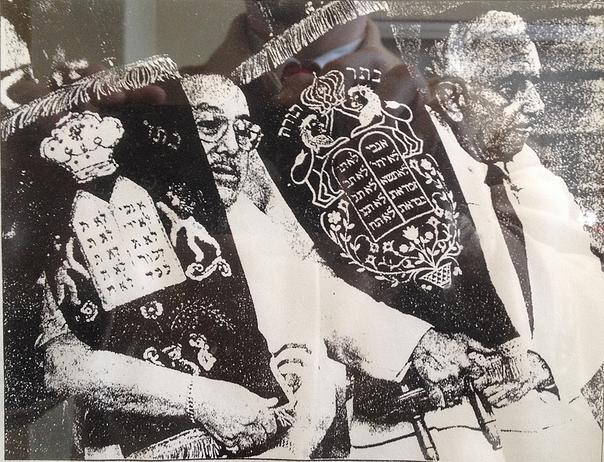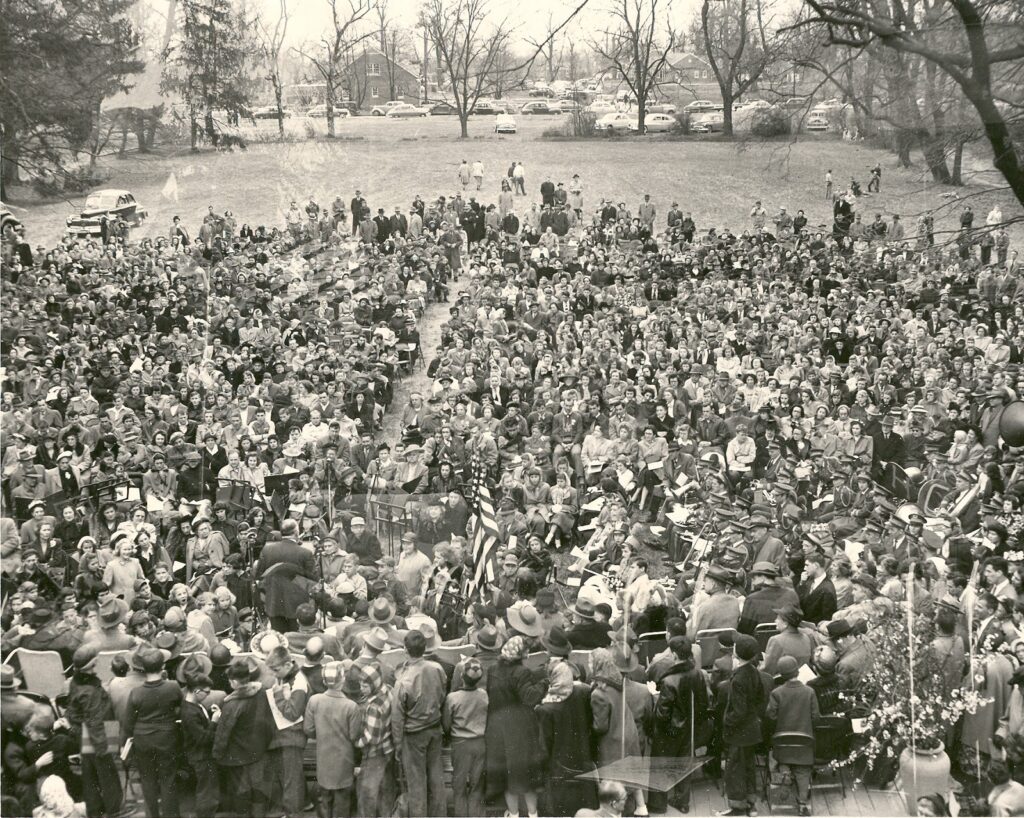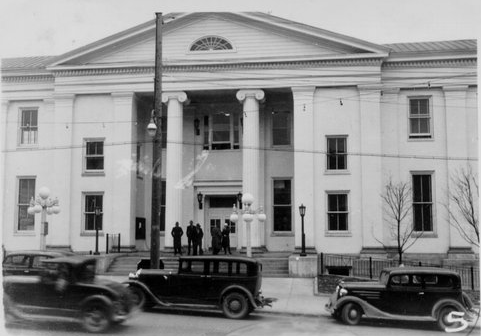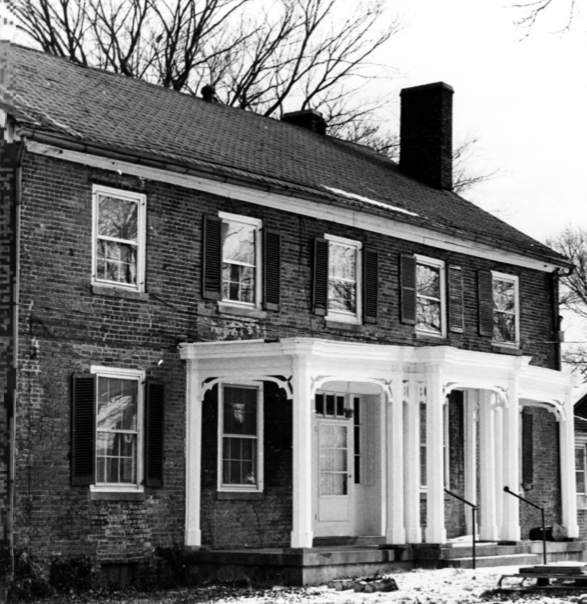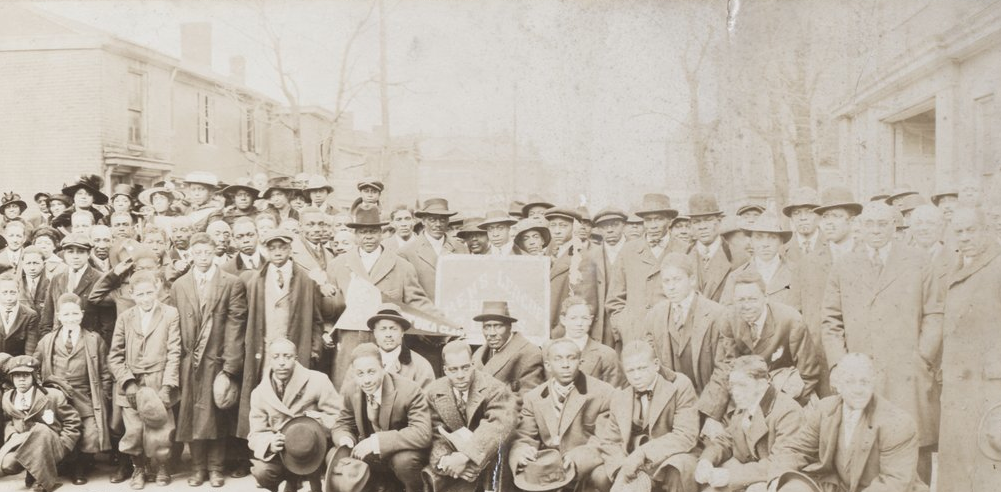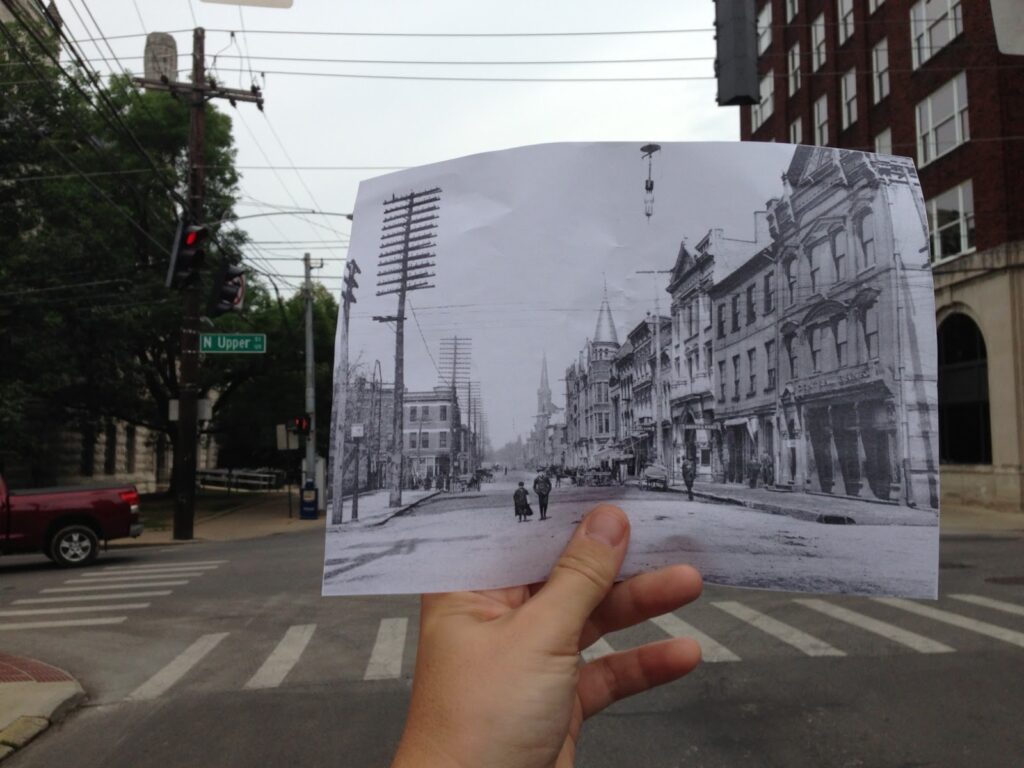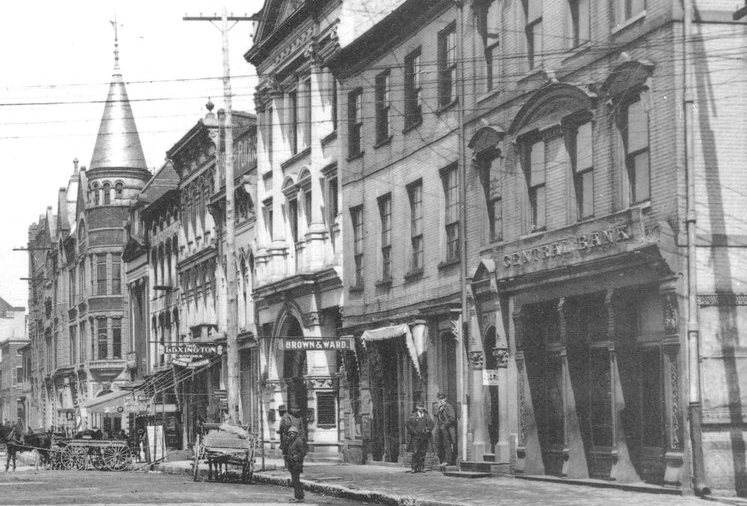Might what appears to possibly be a routine religious service be something greater? Make your guesses (and if you were there, tell your tales) in the comments as part of this week’s #ThrowbackThursday.
Tag: ThrowBackThursday
Ashland Dedicated as a Historic House Museum in 1950
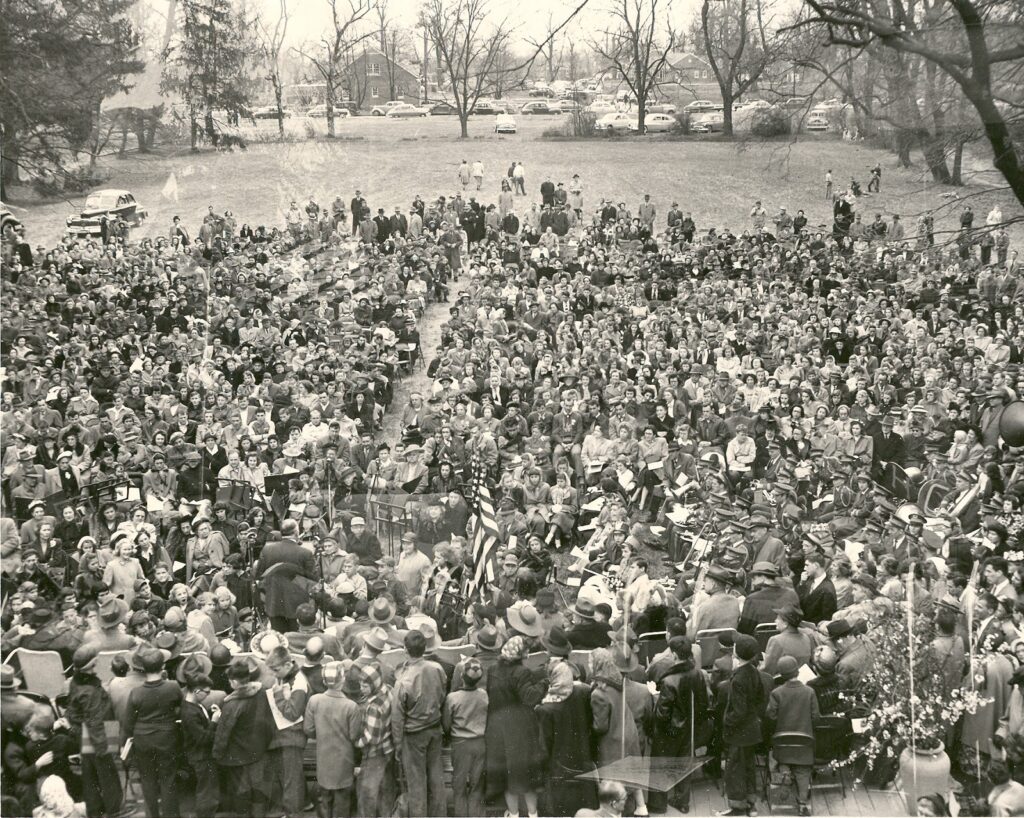 |
| Vice President Barkley Addresses Crowd at Ashland – Lexington, Ky. Photo: History of a House Museum |
The large crowd photographed in last week’s #TBT made for some interesting guesses, including the Cane Ridge revivals. But in what is becoming a weekly tradition, Michael Chambers was the first to accurately guess the answer to last week’s puzzler.
On April 12, 1950, Vice President Alben Barkley addressed the thousands gathered on the lawn of Ashland: the home of Henry Clay for its dedication as a historic house museum open to the public.
Then-mayor Tom Mooney proclaimed the day “Henry Clay Day” in the city where festivities kicked off at Cheapside Park before the parade processional down main street to Ashland.
Barkley declared: “This fine mansion now will rank alongside Mount Vernon, Monticello, the Hermitage, and other public memorials to great men of this nation….generations to come will thank you for preserving this shrine.”
A Large Crowd Gathers for Today’s #TBT
This large crowd gathered for a special event in the middle of the last century. Some of you may have been in the crowd!
Do you recognize the location? What was the event? And on what date was this photo taken? Make your guesses below in the comments.
And if you were there, by God, tell us about your memories of that day!
Answering Last Week’s #TBT Mystery: the Clark County Courthouse
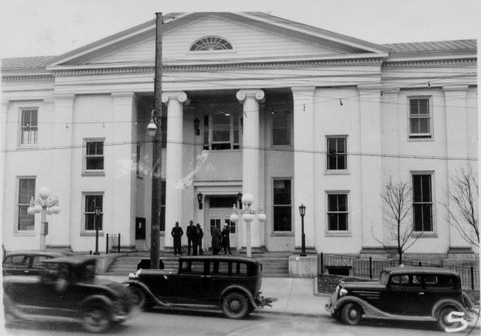 |
| Clark County Courthouse – Winchester, Ky. (Photo: University of Kentucky) |
Last week, I received several good guesses attempting to answer last week’s #ThrowbackThursday. Someone guessed Jefferson County (Louisville), while another guessed Lincoln County (Stanford). It was, however Michael Chambers who was the first to accurately identify last week’s #TBT photograph of the Clark County Courthouse in Winchester.
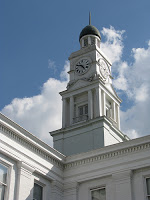 |
| Clocktower of the Clark Co. Courthouse |
The magnificent edifice of the Clark County Courthouse in downtown Winchester was completed in 1855 the cost about $40,000. The iconic Clocktower was added in 1889, while a rear addition was built in 1938.
Last week’s photo was taken in 1939 after the completion of that rear addition. It is contained in the Goodman-Paxton Photographic Collection at the University of Kentucky.
Be sure to check out Nate’s notes from the KY120 project on the “stellar” Clark County Courthouse.
A Courthouse is Today’s #TBT (Plus Last Week’s Answer)
Kentucky has 120 counties within its borders. Of course, each county has a courthouse in which it conducts its official business. Where is this impressive and beautiful courthouse located?
And the answer to last week’s #ThrowbackThursday is after the jump…
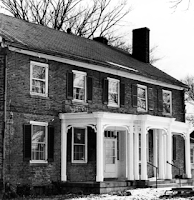 |
| Wllis Green House Photo: NRHP File |
The answer to last week’s puzzle is the Willis Green House (a.k.a. Waveland), located in Danville. Recently acquired by a consortium of preservation groups seeking to protect this landmark. A bit of background on the property from an earlier post:
The property was built in 1800 by Willis Green as part of a several hundred-acre farm. Green was an early settler of the Commonwealth having first arrived here as a surveyor in 1782. Green even represented Kentucky County in the Virginia Legislature. He and his wife, Sarah Reed, along with their 12 children, called Waveland home. It is said that the 1783 Green-Reed nuptials were “one of the first Christian marriages ever solemnized on Kentucky soil.”
Of the nine state constitutional conventions held in Danville, Green was a delegate at two. He was one of the original trustees of Transylvania Academy and was involved in the establishment of both Centre College (1819) and the Kentucky School for the Deaf (1822). From 1839-1845, Green served as a Whig in Congress as a representative from Kentucky.
It is a two-story, brick home in the Georgian style. Though vacant for decades and despite damage to windows, doors and a roof collapse, the interior woodwork – the product of Irish craftsmen from Philadelphia – remains intact and in good condition.
You can expect to see more about the history of the Willis Green House on this site in the coming weeks! And congratulations to Rachel Alexander of Bricks + Mortar who was the first to correctly guess last week’s #TBT!!
Façade of Which Historic National Register Property? #TBT
Last Week’s #ThrowbackThursday a Clue to this Week’s Blue Grass Trust deTour of First African Baptist Church
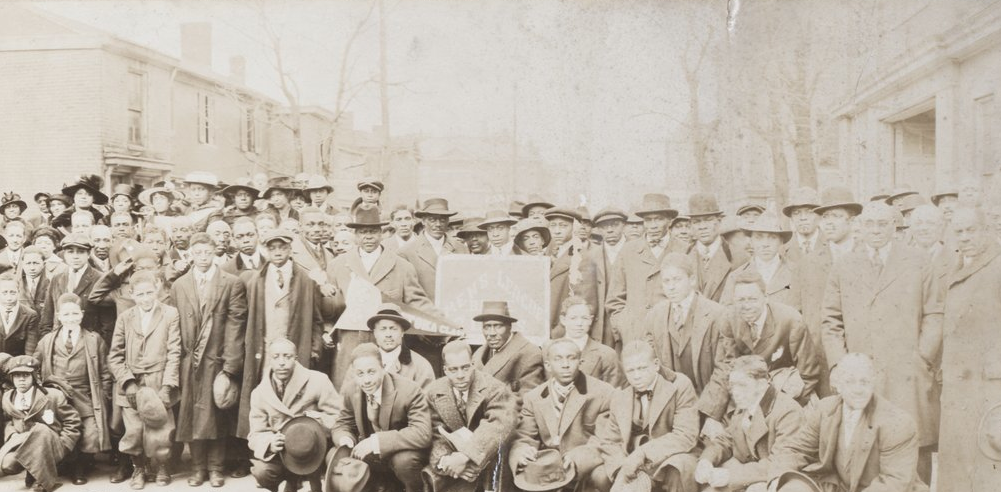 |
| Last Week’s #TBT Photo |
The Streetsweeper successfully guessed that a connection might lie between last week’s #TBT post and this week’s Blue Grass Trust deTour of the First African Baptist Church.
I had significantly cropped the contest photo, displayed above, from the original. In so doing, I actually masked the church from view. In the foreground is a Sunday School class from what was known in its day as the First Baptist Church (Colored) while the background showed the streetscape of Short Street ca. 1911 looking west from Deweese Street. At the time it was highly residential and quite different from its present form.
The uncropped photo follows after the jump.
 |
| 1911 Photo of First African Baptist Church Sunday School – Lexington, Ky. Photo: University of Kentucky. |
The uncropped photo also shows the church as it originally appeared, prior to the 1926 Collegiate Tudor addition.
Further back in history, this congregation was the largest in the Commonwealth. The church acquired the property in 1833 and the extant structure was erected in 1856. But the congregation itself traces its roots back to 1790 and its first minister, Peter Durrett.
To learn more about this beautiful piece of Lexington’s East End history (and how you can help preserve her), join the Blue Grass Trust deTour tomorrow evening (that’s Wednesday at 5:30). More details are available on Facebook at https://www.facebook.com/bgtdetours/events.
Also, be sure to check out Merlene Davis’ column which appeared in today’s Lexington Herald-Leader, “Efforts continue to purchase Lexington’s historic First African Baptist Church.”
Sunday School Class at Historic Church #TBT
Do you recognize this week’s #ThrowbackThursday? I got a few complaints about last week’s picture being just too easy. Clue: the picture if of a Sunday school class. And I’m looking for location and identity of the church.
Hopefully, I’ve upped my game with this week’s photo. But Lexington knows her history… Let’s hear it in the comments!
Short and Upper Streets, ca. 1898
A number of people recognized last week’s #ThrowbackThursday as being at the corner of Lexington’s Short and Upper Streets. Cropped from the original picture were St. Paul’s Catholic Church and Cheapside, as I figured those made for too easy of clues.
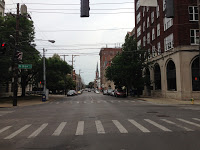 Still, many recognized the long gone parapet atop the extant Northern Bank Building (home of Parlay Social).
Still, many recognized the long gone parapet atop the extant Northern Bank Building (home of Parlay Social).
Also remaining on the blog between Market and Upper is the old First National Bank building with its iconic arched entryway at 215 West Short.
Stay tuned for tomorrow’s #Throwback Thursday!

